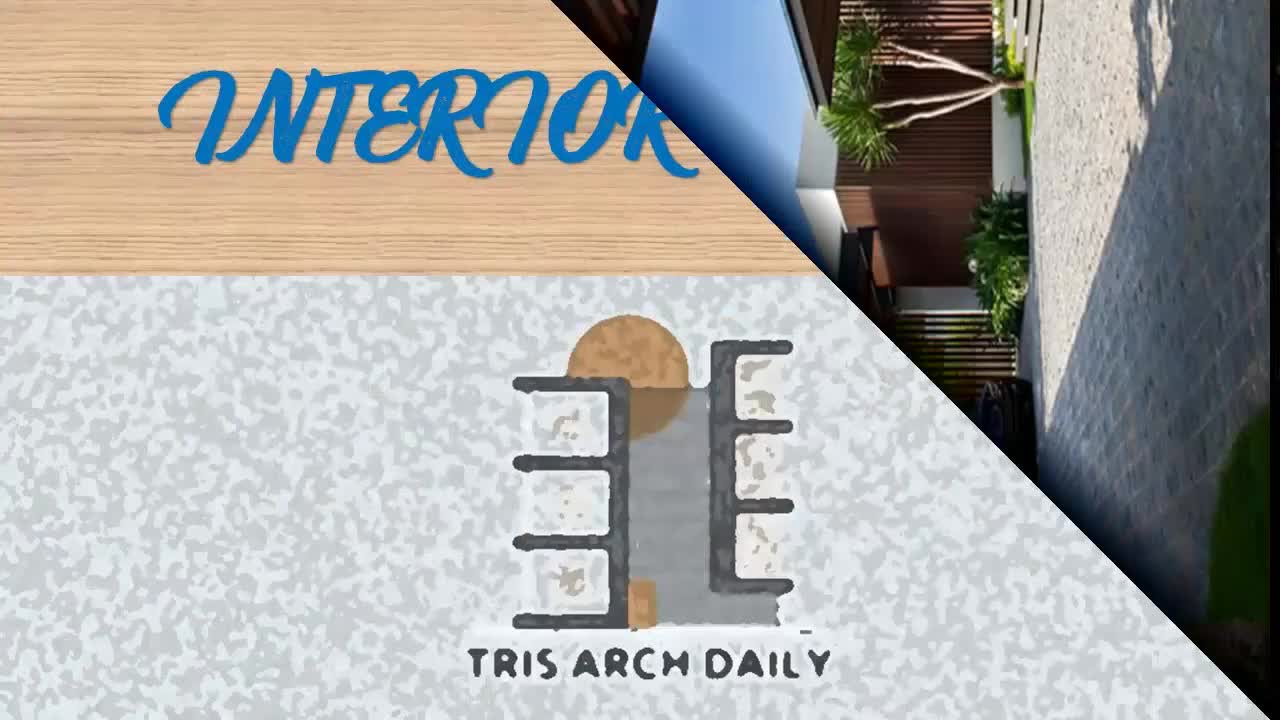Premium Only Content

Six Ramsgate | Wallflower Architecture + Design
Six Ramsgate | Wallflower Architecture + Design
HOUSES•SINGAPORE
Architects: Wallflower Architecture + Design
Area: 1200 m²
Year: 2009
The client's desire for the home to have a perception of substantial private space has resulted in the development
of a spatial program that internalizes spaces such as pools and gardens normally regarded as external to the
envelope of the house. By zoning spaces such as the bedrooms and servants' quarters on alternative levels, i.e.
2nd storey and basement levels, the ground plane is freed from walls that would have been required if public and
private programs were interlaced on the same plane.
The site is approximately 25m wide by 48m deep, and because of the intermingling of internal gardens and column-
free vistas, there is a continuous and unbroken visual depth of 40m that ties together the entrance foyer,
swimming pool, formal living area, internal garden court and formal dining areas. These are perceived to be within
the built enclosure of the house, yet a very obvious public to private hierarchy assists in the intangible zoning
and spatial orientation within the house. This is simply achieved by classical use of symmetry, with important
areas axial to the center line of the house, and with increasingly private space implied by the distance from the
main entrance.
The environmental transparencies at ground level and between courtyards are important in passively cooling the
house. All the courtyards have differing material finishes and therefore differing heat gain and latency (water,
grass, water, granite). As long as there are temperature differences between courtyards, the living, dining, and
pool house become conduits for breezes that move in between the courtyards, very much like how land and sea
breezes are generated. The use of thick masonry walls on either side of the house keep temperature gradients small
within the house and also act as enormous ‘ducting' in guiding air currents between courtyards. At the second
storey, solid hardwood louvers that can be adjusted by hand allow the desired amount of breeze and sunlight to
filter through. And at the 1st storey, substantial trellising minimize sun entry into habitable areas.
The planning strategy releases substantial volumes of perceptual as well as tangible space that is normally not
experienced if traditional architectural space planning norms are not reinterpreted in our local context.
Environmentally, the contiguous and interconnected space encourage the slightest breezes, whether they are
prevailing and therefore air-movement is horizontal, or convectionally circulated, which the courtyards help
generate. For the owner, it is the experiential serenity that unencumbered space, a gentle breeze, dappled
sunlight and the hush of water rippling on a pond that is priceless in our dense and busy urbanscape.
-
 LIVE
LIVE
Joe Donuts Live
3 hours ago🟢 BF2042 Explosive Action: Training for Battlefield 6!
124 watching -
 17:54
17:54
Dr Disrespect
1 day agoDR DISRESPECT vs VAN DAMME in Hitman 3
120K15 -
 10:40
10:40
Nikko Ortiz
18 hours agoMilitary's Best Fights And Fails
112K15 -
 LIVE
LIVE
FyrBorne
10 hours ago🔴Warzone M&K Sniping: Through the Fyr And Flames (Of SBMM)
112 watching -
 LIVE
LIVE
Lofi Girl
2 years agoSynthwave Radio 🌌 - beats to chill/game to
356 watching -
 2:18:15
2:18:15
Side Scrollers Podcast
22 hours agoBlizzard BANS Player for Saying “n00b” + Cracker Barrel Ends PRIDE Funding + MORE | Side Scrollers
61.7K27 -
 19:54
19:54
GritsGG
17 hours agoMAX SR Win on Warzone! Ranked Tips for Loadout & Landing Spot!
22.1K -
 44:41
44:41
Inverted World Live
16 hours agoPolitical Violence in Minnesota w/ AK Kamara
179K20 -
 6:29:40
6:29:40
SpartakusLIVE
16 hours ago#1 Massive MEAT-HEAD can't stop WINNING, can't stop FLEXING
96.6K -
 5:09:25
5:09:25
Drew Hernandez
17 hours agoGIDEON AI THREAT DETECTION SOFTWARE PUSH & NEW EPSTEIN EMAIL LEAK?
65.8K30